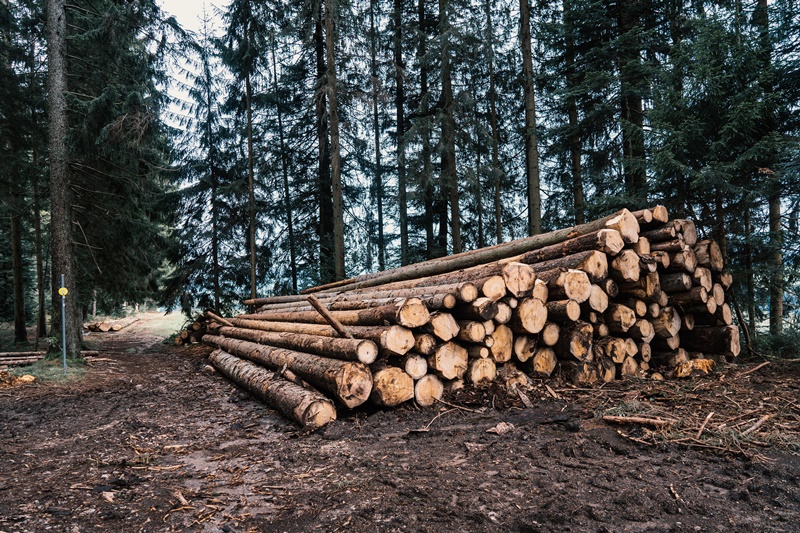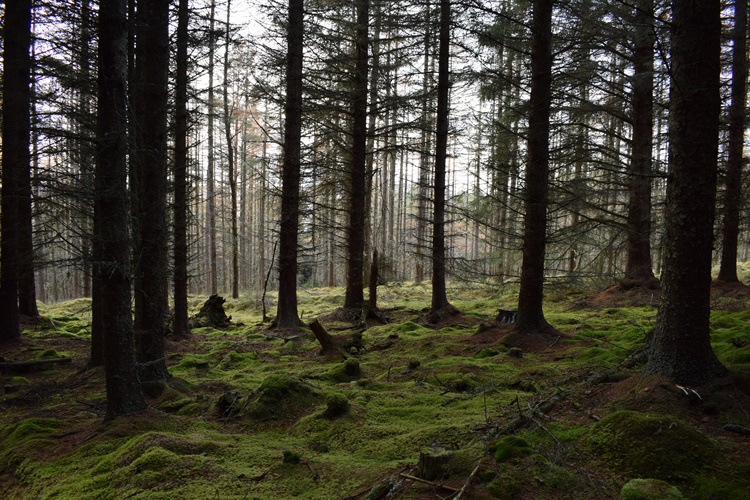There are many options for investing in real estate, and some of them don’t include buying houses. Sometimes we want to buy property and not be bothered with all the maintenance or tenants. If you’re looking for an investment in real estate that’s mostly passive, then forestry might be a good fit. If you don’t want to own the actual property, you can even invest in ETFs which focus on logging.
Wood has been, and will continue to be, used for building homes and furniture around the world. If you’re asking the recurring question of where to invest, maybe real estate and resources investment in forestry land is the answer for you. If you’re someone who loves the forest, loves the look of wood in homes, and finds making mutually beneficial deals enjoyable, then forestry might be your next investment strategy.
As much as the theme of sustainability is a trend across the globe right now, you would think we would have so many more options for building materials. Unfortunately, we don’t. We still tear down mountains and plow down forests to house rapidly growing populations around the world.
In the U.S., lumber prices are at an all-time high in 2021, and there are no replacement options. I’m in Slovenia right now, a country that prides itself on its green approach, but when I see forestry going on around me, all I see are cheap pines and other kinds of trees with ten-year yields that won’t give much return for the investor who planted them. “Where is the quality?” I wonder. For all their efforts and invested resources, one would assume modern foresters would go for higher profit yields.

Here is a little of the information I’ve gathered while looking at properties for the purpose of forestry. I always say, “If we can’t beat them, join them, but do it better.” Yes, better. We can cut down trees in sustainable ways, and we can replace those trees the way they grow best.
Every country is going to be different when it comes to laws about forestry. In America, people can contract with the government for certain lands. In Europe, it’s similar, but it all depends on the rules. So, before buying land, make sure that the land is not, and will not become, protected land. Make sure there are no nature habitats nearby, and be sure that you can get permits to cut your own forest before buying the land. While considering this investment, also remember to look into pests and fire danger, making sure to consider what damages could be foreseeable. It’s a lot of research, but forest land far away from tourist and scenic spots, yet close enough to development, is relatively cheap, so it’s a good investment to consider.
Research your local area for land that’s either forest today, or brush that can become forest. Contact the municipality to ask about the land. Is it protected? Can you plant trees, or cut down the trees that are there then plant new ones? Get as much detail as you can about the rules before you make an offer. Then ask to see the land and make a list of all the trees that are there. Once you have this information, you can determine what the current logging price is on those trees, then subtract the cost of cutting them down and calculate transportation expenses into a rough business plan. Once you determine it’s worth the investment, and make sure there aren’t any extra laws that will keep you from logging in the future, then make your offer.

Once you own the property, go about making sure the old brush is moved out. That’s one of the big causes of forest fires. Determine which trees you will cut right away. This is a good way to get your money back on the property you just bought. Then plant plenty of new, high-quality trees like teak in southern climates, and oak, maple, and walnut in the northern climates. Read Mycelium Running to learn about how you can add mushroom cultivation as an additional business. Every tree you cut down can be food for mushrooms, and the right mushrooms can bring in very good profits.
As for prices, the value of logs is cyclical. In 2019, prices dropped, but now they are up. Since logging is a long-term investment, you can choose when to let your product enter the market. Growing high value trees and nurturing your investment with a bit of hard work will yield some great profits when the cycles are up. Forest Enterprises supports local customers to reduce log price risks. Forest Enterprises offers a good article and several reports to study for the U.S. investor.
Don’t want to bother with all the physical work? If you need something more passive, head over to the stock market for some forestry ETFs.
WOOD – timber and forestry that’s diversified into many timber companies in 25 global markets.
CUT – a global logging ETF, Invesco Distributors Inc.
In Germany, ForestFinance has some great details about Forestry Funds. They claim the best form of investing in forestry is in funds. Their article can be read here, with a focus on monoculture, which can be produced quickly and cheaply. It’s not my favorite method of forestry, but it does seem to bring good profits; they have been doing it for twenty-five years.
Maybe this all sounds good and you want to proceed, but do so with caution. Make a financial plan and be critical. Always assess the risks before investing. I was reading a book recently in which the author told a story about a man who wanted to invest in frogs. He bought the frogs and took them to a pond. They grew and grew until it was almost time to harvest. He went to the pond to check on them and saw that they were ready. He planned to come back that weekend and harvest the frogs. When he came back that weekend, there were tire marks all over the outside of the pond and he couldn’t find a single frog. Cover all your bases before investing.
I’m not a financial advisor, so I can’t tell you what to do – I’m a technology consultant who likes to buy different investments. But I do like starting conversations and thinking outside the box. Do your own research, and have fun doing it.
Subscribe for more business, sales, and investing posts. Have a lovely day!











